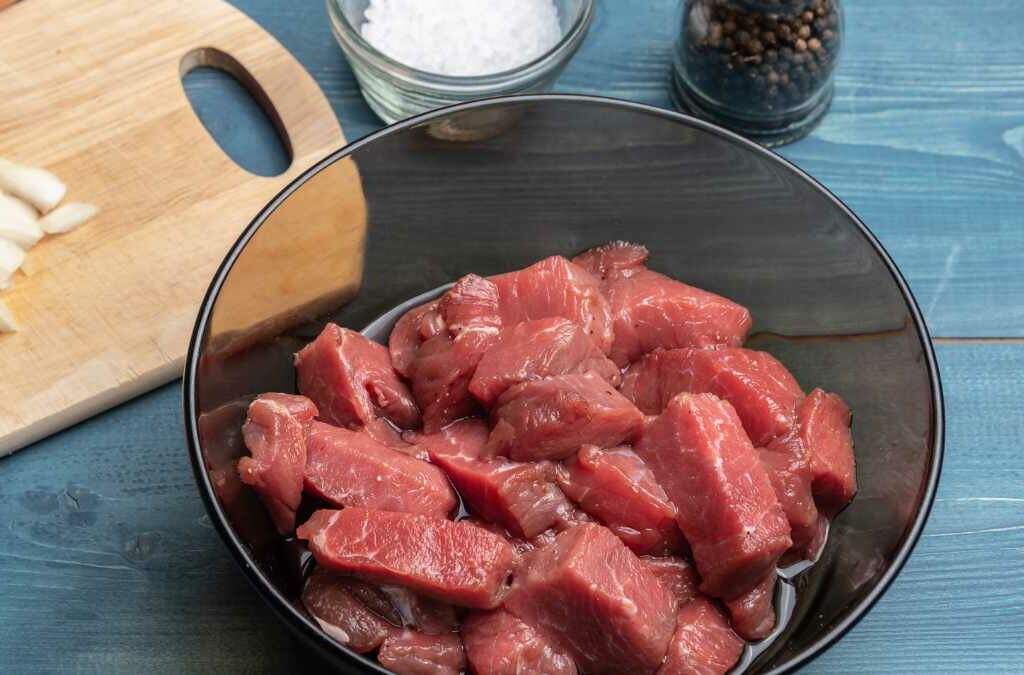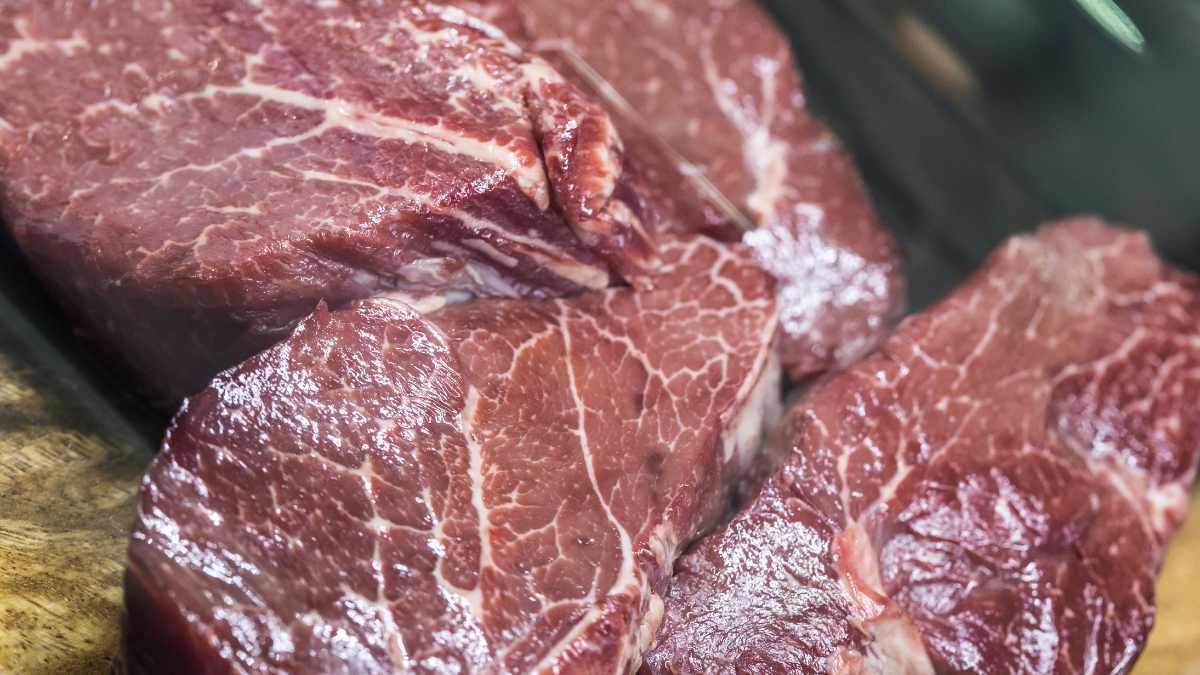Hello sweet parents! April here from my tropical island home with relaxlangmom.com, helping you relax into motherhood.
For today’s recipe, I’m sharing not one, but two fuss-free ways for tendering meat to make even the toughest cut of beef deliciously tender for Filipino beef tapa. It’s market day today and I was late so instead of the fabled “lomo” or sirloin, I was only able to get the lean meat from near the cow’s hind legs. This is called round and it’s typically a tough cut of beef.
So I’d be sciencing the heck out of this tough cut so I’d get my soft and tender tapa fix.
Baking Soda: An Old-School Trick
The first method of tenderizing meat uses an old cook’s secret – baking soda. Simply coat your beef round roast in 1 teaspoon of baking soda and refrigerate for at least 2 hours. Normally, for a kilo of meat, you’ll need 2 teaspoons of baking soda mixed in a slurry of 1/4 cup water. But since I have small cuts of thin meat for tapa, I only used 1 teaspoon. The original recipe from the Tasting Table uses 1 teaspoon of baking soda per 340 grams of meat. If you’re familiar with Chinese cooking, they use this technique with a slurry of cornstarch and soy sauce, They call this technique “velveting”. which results to a “velvety’ meat.

The alkaline baking soda causes a chemical reaction to occur on the meat’s surface, which stops the proteins from seizing up when cooked as opposed to other tenderizers that break the tissues of the meat. Rinse the beef well before cooking to remove excess baking soda.
Some instructions leave this out and I’ve seen some recipes that mixes the baking soda with the marinade but I highly recommend washing it off. Residual baking soda can alter the taste of the meat. If not rinsed off properly, baking soda can leave a soapy or bitter flavor in the meat, especially if it’s used in large quantities. This can negatively impact the flavor of your tapa. Also for safety concerns, while small amounts of baking soda are generally safe to consume, excessive residual amounts are best avoided. Thorough rinsing helps remove most of the baking soda from the nooks and crannies of the meat.
Now, normally, that should be enough. You can proceed with marinating your Beef Tapa. but since I’m nerding it out today, I’m going a step more by using the sous vide to tenderize the beef.
Sous Vide: The New Kid on the Block
For guaranteed melt-in-your mouth tapa, try cooking the beef using a sous vide. After doing your marinade, leave the meat for about 4 hours. Remove the marinade and set aside then bag your meat. Why remove the marinade? It’s because acids don’t work well with slow cooking using the sous vide. Acids can become too concentrated. Since the liquid in the bag is not replaced during sous vide cooking, the acid in any marinade essentially stews in its own concentrated juices for hours. This makes it too acidic and intense by the time the meat is cooked. Simply seal the beef in a bag, or use the displacement method and cook at 149 F/65 C for 8 hours.
The low, extended cooking allows the meat’s fibers and connective tissue to break down slowly but surely, resulting in ultra-tender, fall-apart beef. Once removed from the bag, let it cool, pack away, and cook ala Tapsilog or top on a tapa sandwich.
I hope these foolproof tips will help you wow your fam with melt-in-your-mouth Filipino tapa.
To get my complete foolproof recipes for tender beef tapa using both methods emailed to you along with other recipes and activities, simply sign up for my newsletter below! Keep calm, mama!
April
relaxlangmom.com

